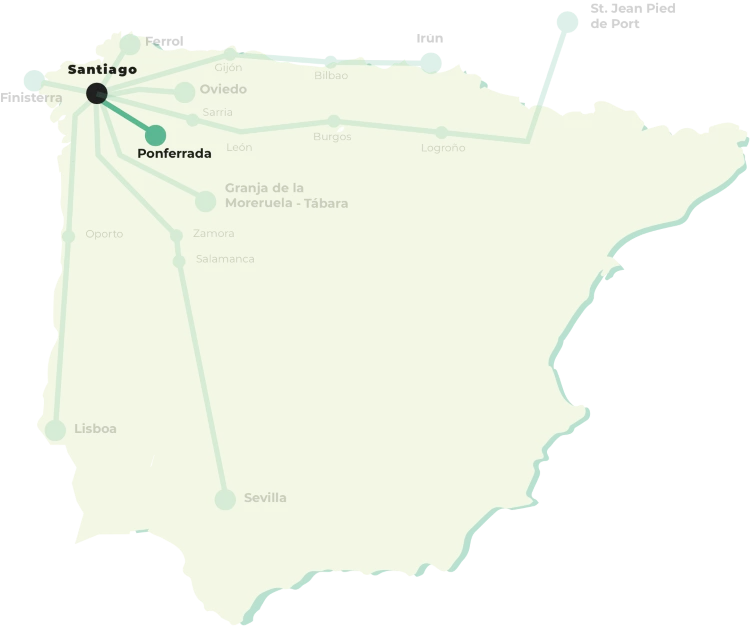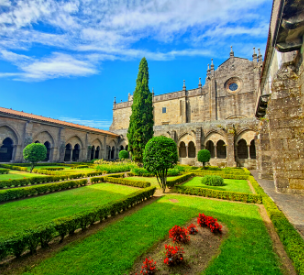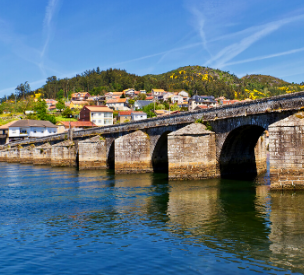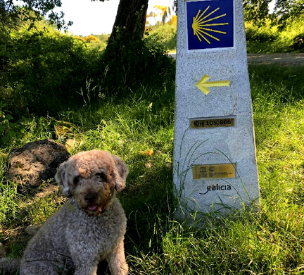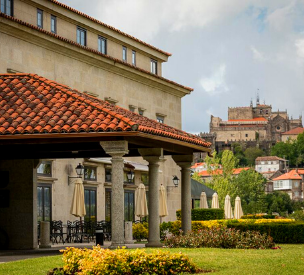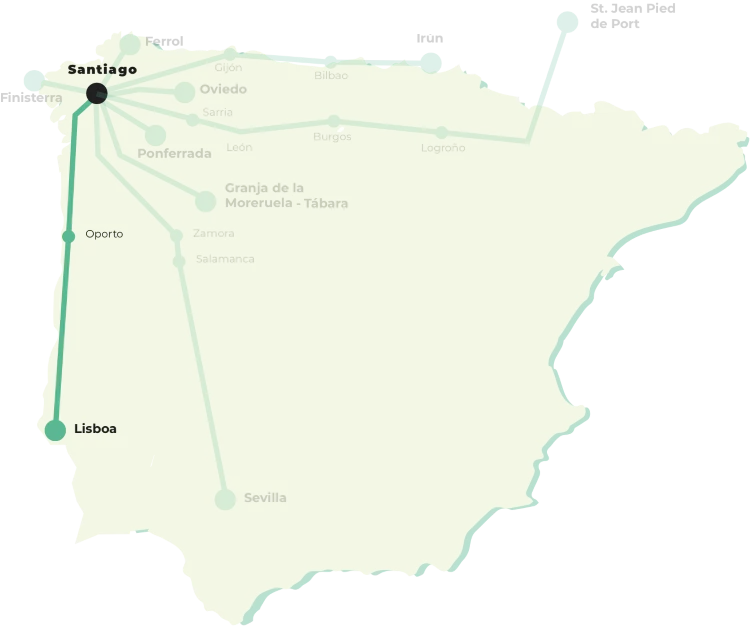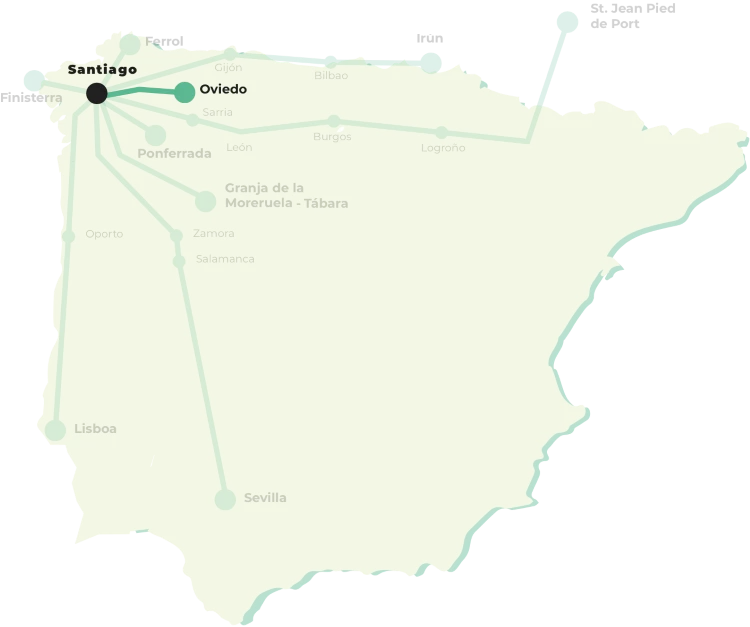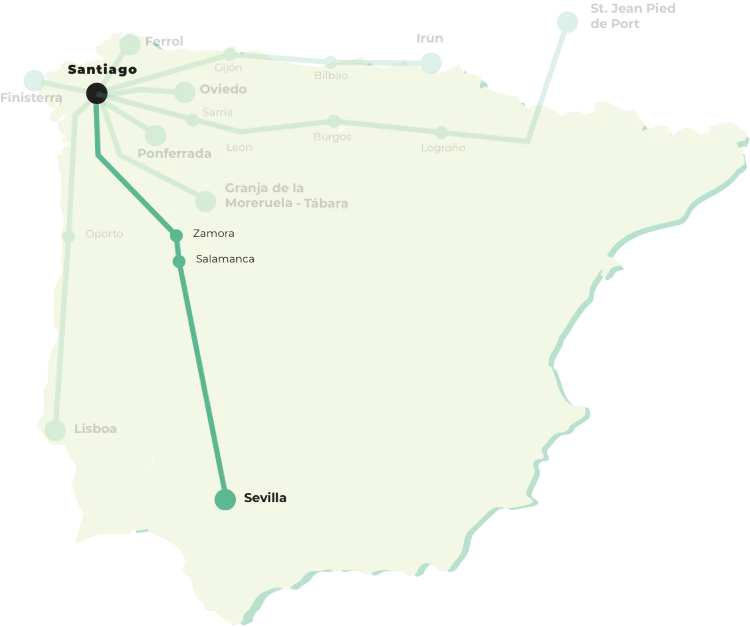Portuguese Way
27 stages | 620km
The 2nd busiest route of the Camino de Santiago
From Lisbon, it draws a line from south to north that passes through important Portuguese cities and towns, such as Santarém, Coímbra, Oporto, Barcelos, Ponte de Lima, and Valença do Miño, until it crosses the international bridge over the Miño River and enters Galicia through the town of Tui. Already in Galician lands, the route runs through the entire province of Pontevedra until it reaches the city of the Apostle.
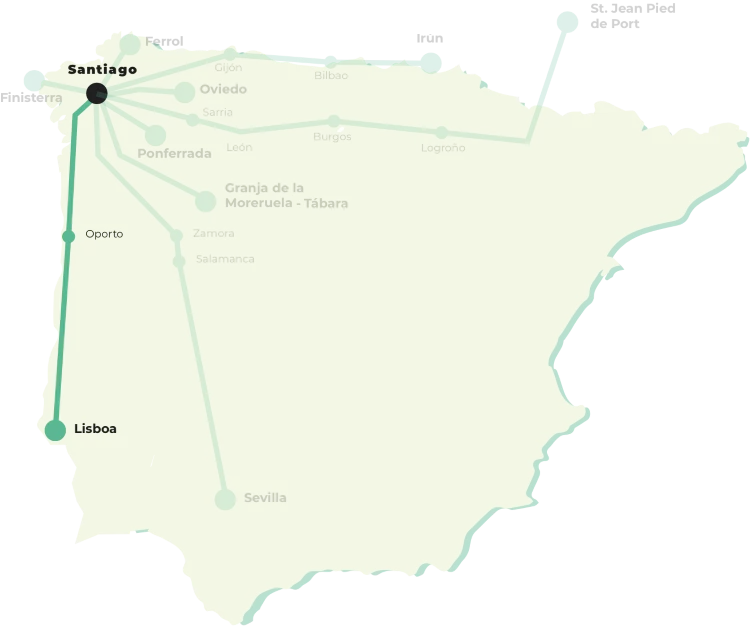
Journey to Santiago de Compostela from Portugal
All the information about the Portuguese Way
Why choose the Portuguese Way?
This is one of the most historic and most traveled routes, a perfect itinerary for any pilgrim. It offers one of the smoothest routes among all the Jacobean routes.
The Camino is designed for enjoyment, learning about the different Portuguese and Galician cultures, and immersing yourself in exciting natural and rural landscapes. You will enjoy admiring the ancient forests and millenary crossroads, following in the footsteps of other pilgrims who, like you, have walked this route since the Middle Ages.
What to see on the Portuguese Way?
- City of Lisbon
- Templar Castle and Convent of Christ – Tomar
- Monumental Complex of Buçaco – Mealhada
- Tui Cathedral
- City of Pontevedra
- Sampaio Bridge
- Church of Santiago Apóstol – Padron
- Collegiate Church of Iria Flavia
- Monasterio Benedictino de Samos
- Ruinas del antiguo pueblo de Portomarín
- Catedral de Santiago de Compostela
Where to start the Portuguese Way?
The Portuguese Way starts in the Portuguese capital. From here to Santiago de Compostela, it covers approximately 600 kilometers. If you want to complete the entire route, you will need at least one month to cover the 27 stages.
Undoubtedly, it will be a spectacular adventure during which you will immerse yourself in the culture and history of Portugal until you reach the land of Galicia. These two sister lands share many similarities.
Porto is the city par excellence to start the Portuguese Way. From this point, the presence of the Camino becomes more evident as we find better signposting and a variety of services offered to pilgrims.
From Porto to Santiago de Compostela, you have 240 kilometers ahead of you, which you can comfortably cover in 12 stages.
If you have little time to do the Portuguese Way, Tui is the perfect place to start. From this point, you only have to travel 120 kilometers to Santiago de Compostela, perfect for a one-week holiday. The Galician section of this route has everything you need to enjoy an extraordinary experience: the best gastronomy of the estuaries, designation of origin wines, beautiful landscapes of vineyards and fields, and a wealth of history and monuments.
Map of the Portuguese Way
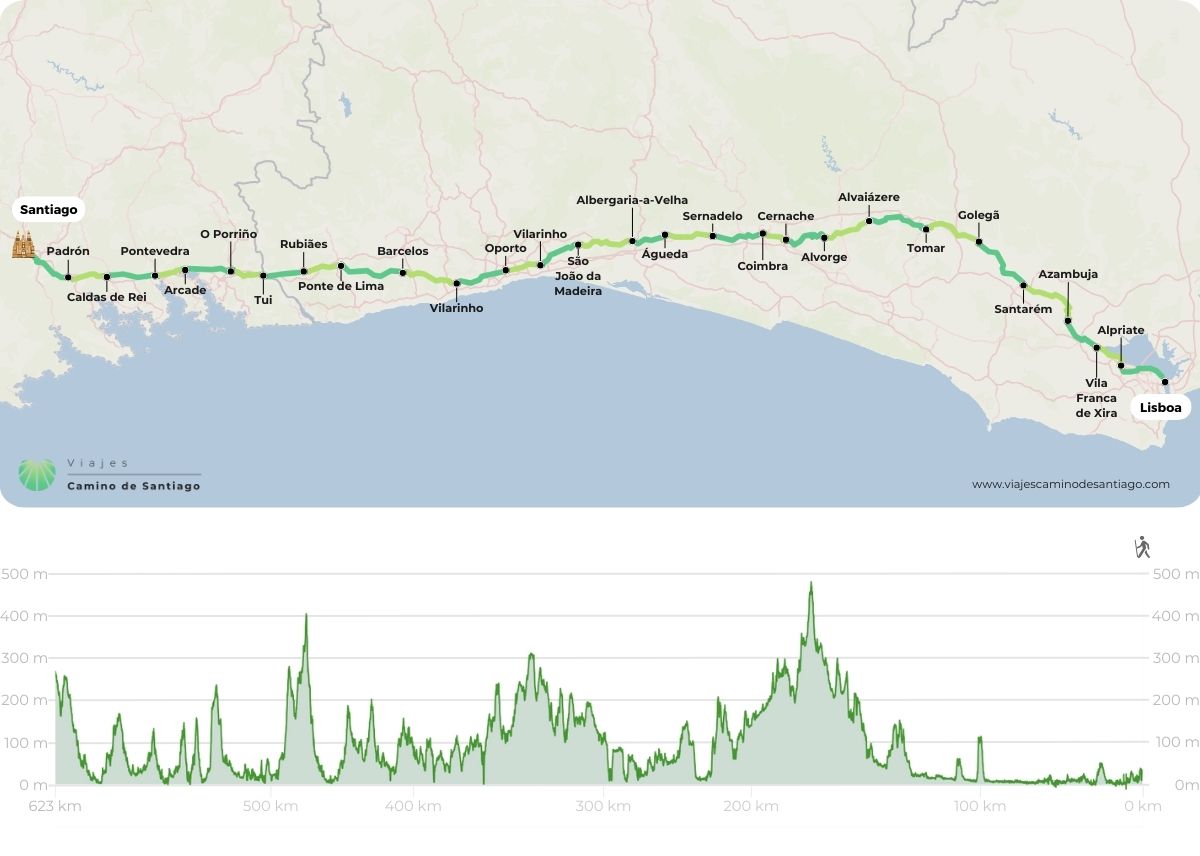
Stages of the Portuguese Way
History of the Portuguese Route
The Portuguese Way began to develop in the Middle Ages, taking advantage of the river, sea, and land routes traced by the Romans and Muslims. Its origin may be, according to some historians, in a political path of reconquest and expansion of the kingdom of León. However, when Portugal emerged as an independent kingdom of Castile and Leon, there were already two consolidated routes linking the cities of Coimbra and Santiago, one by land and the other by sea.
The river and maritime routes were the most used since they allowed for faster movement. However, sometimes these routes could not be used due to big storms, so land routes began to take hold. Undoubtedly, the great event that consolidated the overland itinerary of the Portuguese route was the pilgrimage of Isabel of Portugal, known as Rainha Santa, in the 14th century. In her will, the queen earmarked a large sum for the maintenance and development of pilgrims’ hospitals in the Kingdom of Portugal, which meant a significant improvement in the pilgrimage routes and their infrastructures.
Another aspect that helped to consolidate the Portuguese Camino de Santiago was the presence of the Order of the Knights of St. James in Portugal. This order defended the border of Extremadura and offered protection to the pilgrims, making the Camino much safer.
The pilgrims who made this journey were mostly Portuguese, but there were also a large number of European pilgrims from different nations.
Finally, we can speak of a period of decline of the Portuguese itinerary and a subsequent resurgence. This new boom took place at the end of the 20th century, practically parallel to that of the French Way. Thanks to the efforts of public institutions and associations of pilgrims from Galicia and northern Portugal began to signalize, recovering the route known as the Central Way. Soon after, other itineraries were added, such as the Portuguese Way along the Coast and the Inland Way, as well as other alternative routes. The success of this revitalization was such that the Portuguese route has become the second most frequented itinerary of the Camino de Santiago, after the French Way.
Other routes of the Camino de Santiago
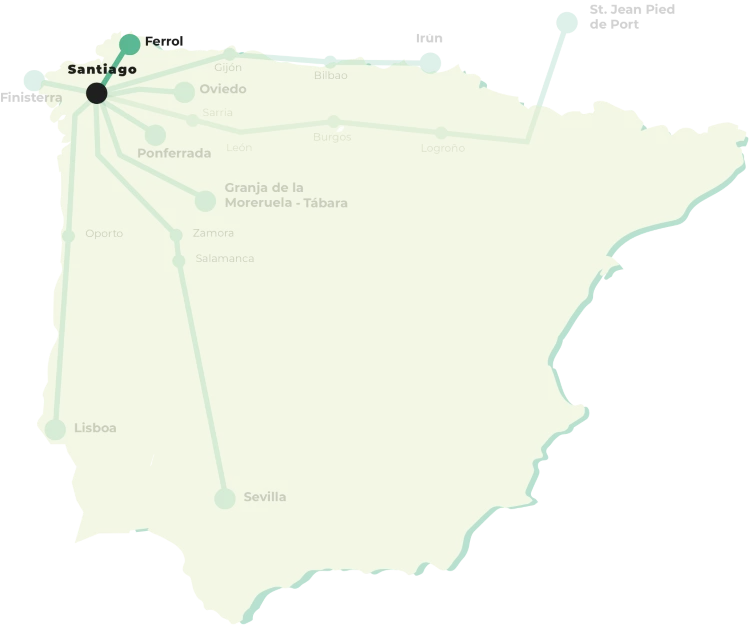
English Way
From Ferrol to Santiago de Compostela. Delve into the culture of villages of great military, naval and historical importance. 5 Etapas | 125 km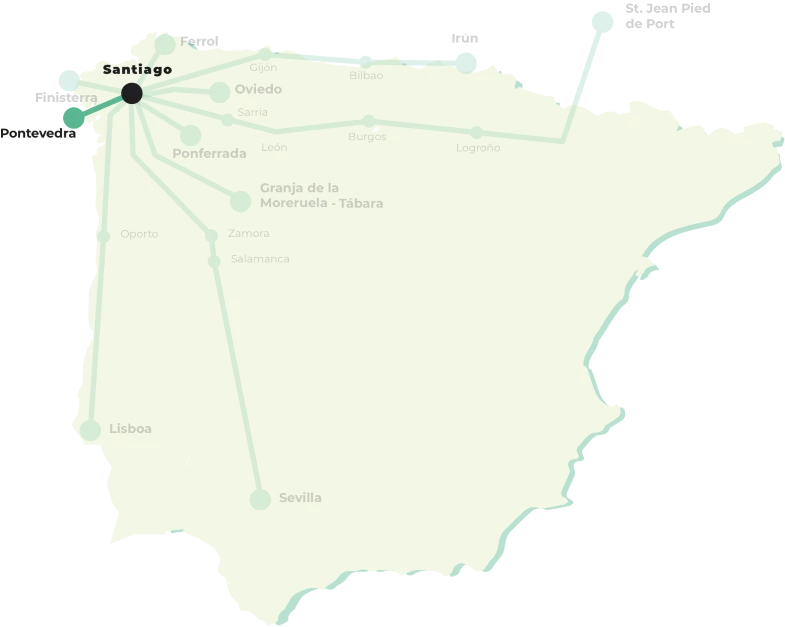
Father Sarmiento Way
From Pontevedra to Santiago de Compostela. Total 142 km - 6 stages 6 stages | 142 km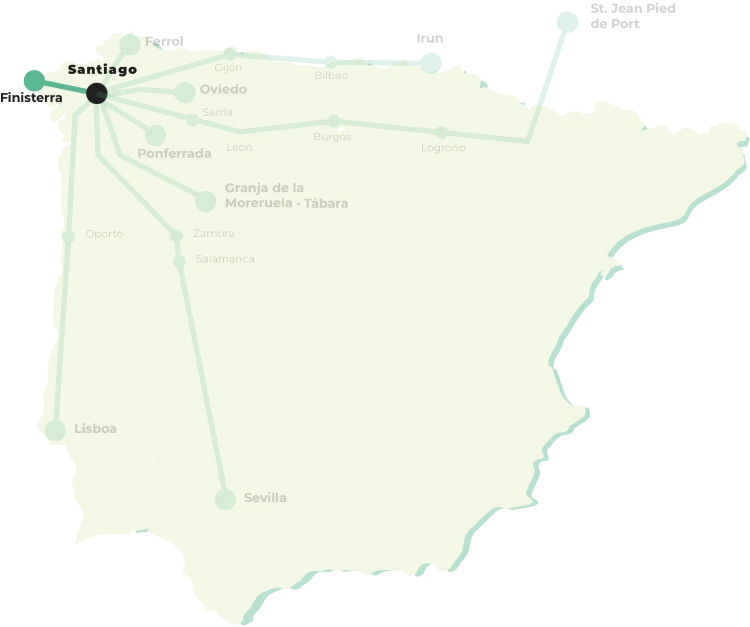
Finisterre and Muxía Way
From Santiago de Compostela to Muxía. A mystical and spiritual journey to the ends of the Earth 5 stages | 120 km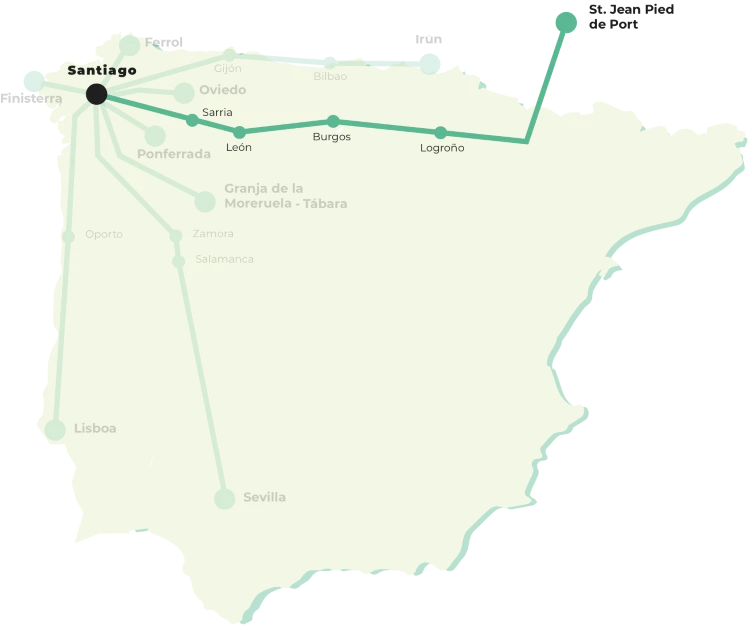
French Way
Desde Saint Jean Pied de Port hasta Santiago de Compostela. Follow in the footsteps of Charlemagne through the Pyrenees and travel 800 kilometers along the French Way. 33 stages | 768 km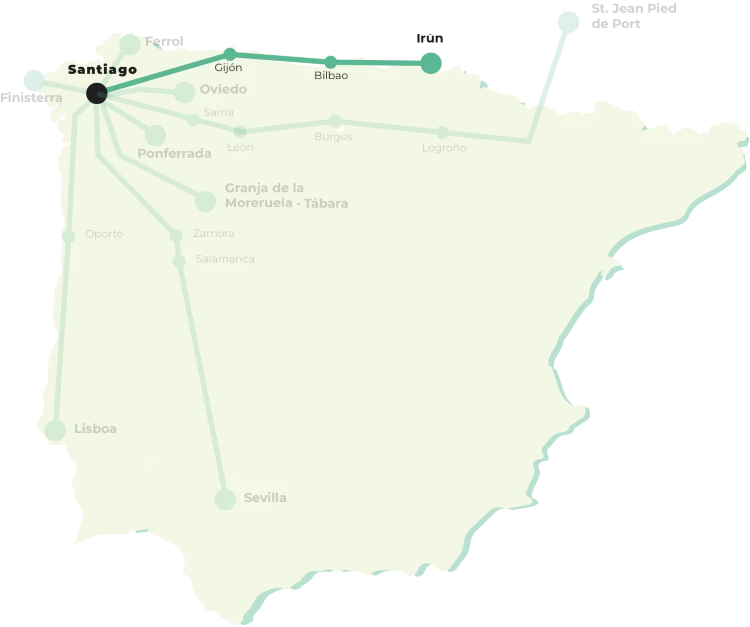
Northern Way
From Santiago de Compostela to Muxía. An unforgettable experience with breathtaking scenery 34 Stages | 820 km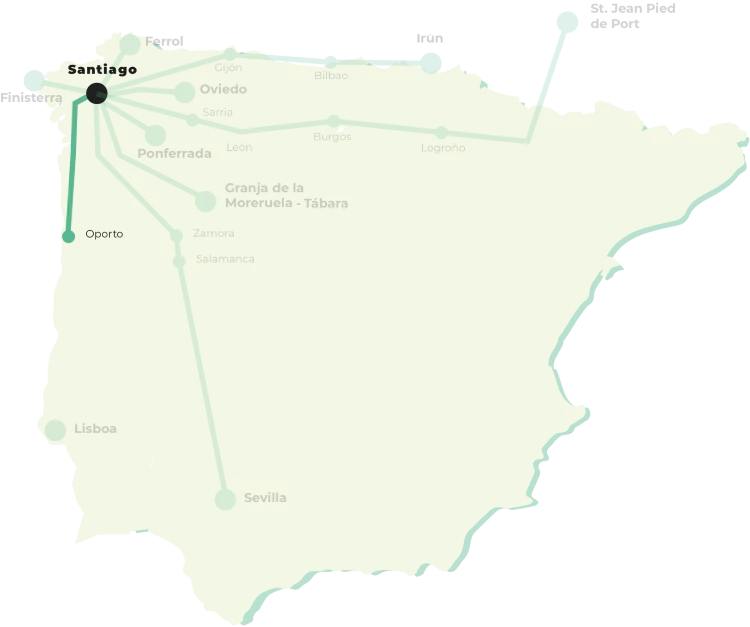
Portuguese Way along the coast
From Oporto to Santiago de Compostela. Total 194 km - 8 stages 8 Stages | 194 km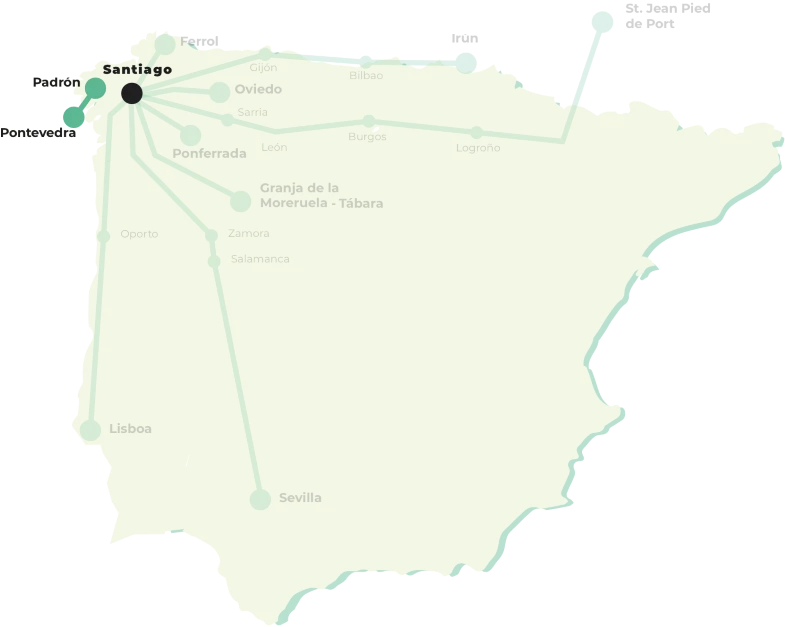
Portuguese Way: spiritual variant
From Pontevedra to Padrón. Total 81 km - 3 stages 3 stages | 81 km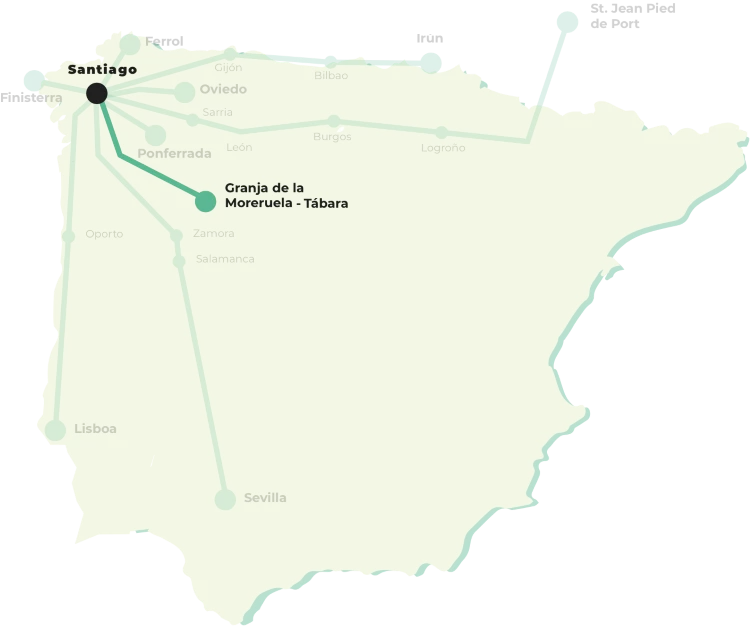
Sanabrian Way
From Granja de Moreruela to Santiago de Compostela. Total 365 km - 13 stages 13 stages | 365 km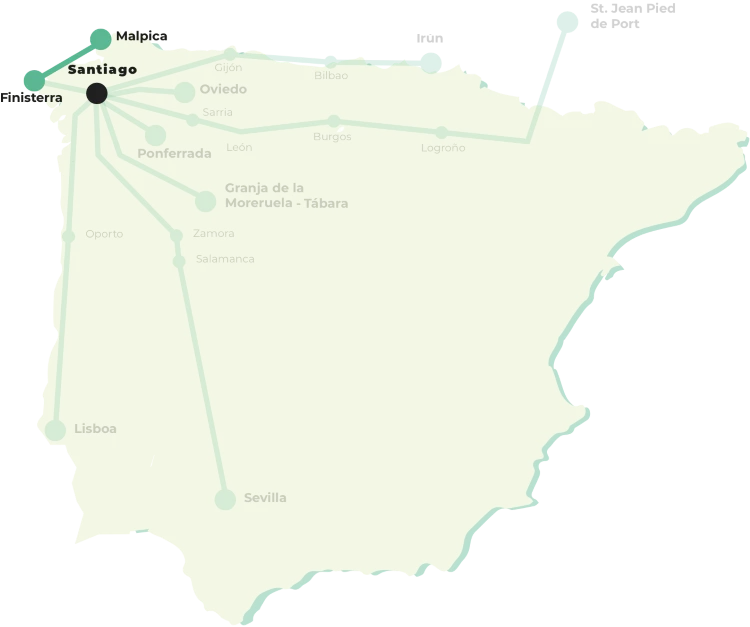
Way of the Lighthouses
From Malpica to Finisterre. A 200-kilometer journey along the coast and through the wildest of nature 8 stages | 195 km